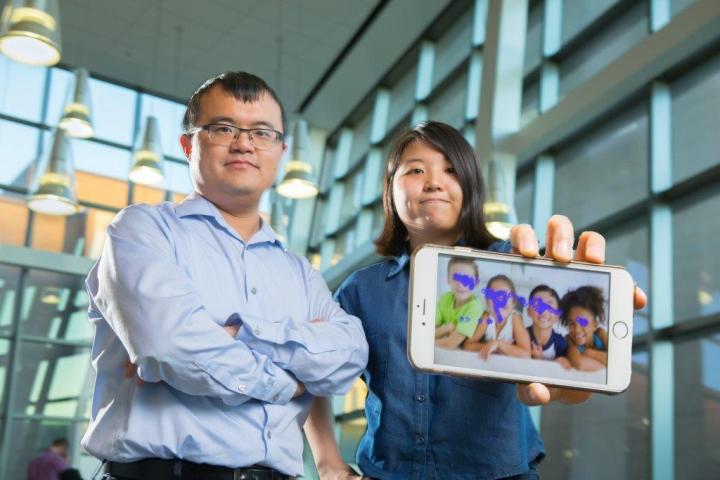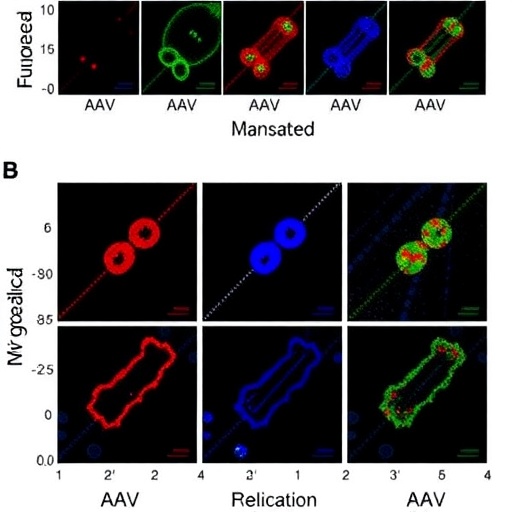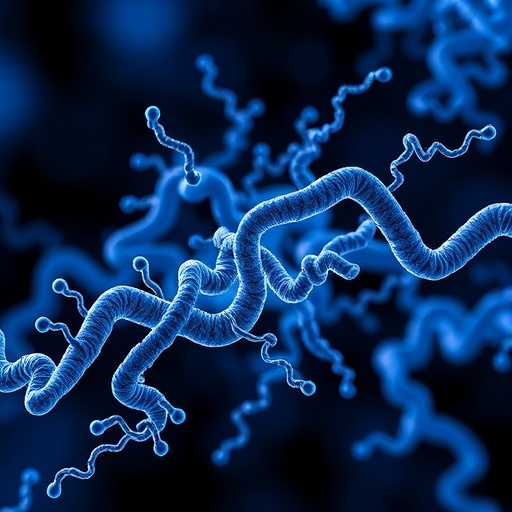
Credit: Credit: Douglas Levere.
BUFFALO, N.Y. — What if someone invented a smartphone app that could help detect autism spectrum disorder (ASD) in children as young as 2 years old? Could it lead to earlier detection and therefore better treatment?
A study co-authored by a University at Buffalo undergraduate and presented at the IEEE Wireless Health conference at the National Institutes of Health last month could provide the answer. It involves the creation of an app for cell phones, tablets or computers that tracks eye movement to determine, in less than a minute, if a child is showing signs of autism spectrum disorder.
Early detection is important
Early detection of autism can dramatically improve the benefits of treatment, but often the disability is not suspected until a child enters school.
"The brain continues to grow and develop after birth. The earlier the diagnosis, the better. Then we can inform families and begin therapies which will improve symptoms and outcome," said Michelle Hartley-McAndrew, MD, clinical assistant professor of pediatrics and neurology at the Jacobs School of Medicine and Biomedical Sciences at UB. Hartley-McAndrew, medical director of the Children's Guild Foundation Autism Spectrum Disorder Center at Women & Children's Hospital of Buffalo, is a co-author of the study.
"Although it's never too late to start therapy, research demonstrates the earlier we diagnose, the better our outcomes," said Kathy Ralabate Doody, PhD, an assistant professor in the Department of Exceptional Education at SUNY Buffalo State College and a co-author of the study. "We offer many educational interventions to help children with autism reach the same developmental milestones met by children with typical development."
Young author, strong team
The principal author is Kun Woo Cho, an undergraduate majoring in computer science and engineering. She worked with her research advisor Wenyao Xu, PhD, assistant professor in the Department of Computer Science and Engineering in UB's School of Engineering and Applied Sciences. "This is an ongoing study on how to analyze ASD by monitoring gaze patterns. I used the Wasserstein metric, designed the system protocol, and visual stimuli using social scenes. This is teamwork, and I learned from my advisor and graduate students in the lab," Cho said. "On all the research work, we are working together."
Those lab co-workers and study co-authors are Feng Lin, PhD, research scientist, and Chen Song and Xiaowei Xu, PhD, students in UB's Department of Computer Science and Engineering.
Eye tracking measurements
The app tracks eye movements of a child looking at pictures of social scenes — for example, those with multiple people. The eye movements of someone with ASD are often different from those of a person without autism. In the study, the app had an accuracy rating of 93.96 percent.
"Right now it is a prototype. We have to consider if other neurological conditions are included, like ADD, how that will affect the outcome," Cho said.
The study, entitled "Gaze-Wasserstein: A Quantitative Screening Approach to Autism Spectrum Disorder," was one of the top-ranked papers at the flagship Wireless Health conference this year, Xu said.
Social scenes elicit different gaze patterns
Autism spectrum disorder affects 1-2 people per 1,000 worldwide. The Centers for Disease Control and Prevention reports that about 1 in 68 children in the U.S. has been diagnosed with ASD.
"The beauty of the mobile app is that it can be used by parents at home to assess the risk of whether a child may have ASD," Xu said. "This can allow families to seek therapy sooner, and improve the benefits of treatment," he said.
The study found that photos of social scenes evoke the most dramatic differences in eye movement between children with and without ASD. The eye tracking patterns of children with ASD looking at the photos are scattered, versus a more focused pattern of children without ASD.
"We speculate that it is due to their lack of ability to interpret and understand the relationship depicted in the social scene," Cho said.
Use of the app takes up to 54 seconds, which makes it less intrusive than other tests and valuable with children with short attention spans, Cho said.
The study included 32 children ranging in age from 2 to 10. Half of the children had been previously diagnosed with autism in accordance with DSM-V diagnostic criteria. The other half did not have ASD.
Further research will include expanding the study to another 300 to 400 children, which is about the annual enrollment for new evaluations at Children's Guild Foundation Autism Spectrum Disorder Center at Women & Children's Hospital of Buffalo.
Leading to a product
Xu called the research "highly interdisciplinary" because of the need for computer technology, psychology for stimuli selection and medical expertise for the application of autism screening.
"This technology fills the gap between someone suffering from autism to diagnosis and treatment," Xu said.
Hartley-McAndrew said a lot of research is going into the use of technology to help in detecting autism. "We still don't have a completely objective measure to diagnose ASD. The diagnosis is based on expert judgment. There are tests considered the 'gold standards,' but they still are somewhat subjective," she said.
One benefit of the technology is that parents could use it at home to determine if there is a need for clinical examination. And, she said, the technology crosses cultural lines, and language is not a barrier.
"Nowadays, most people have a smartphone," she said.
###
Media Contact
Grove Potter
[email protected]
716-645-2130
@UBNewsSource
http://www.buffalo.edu





